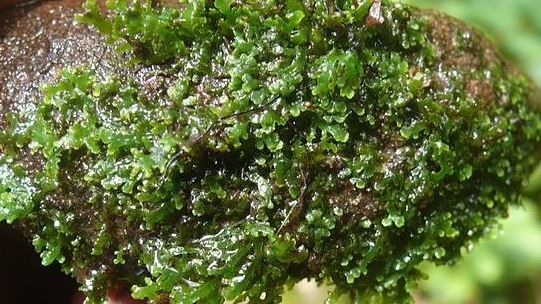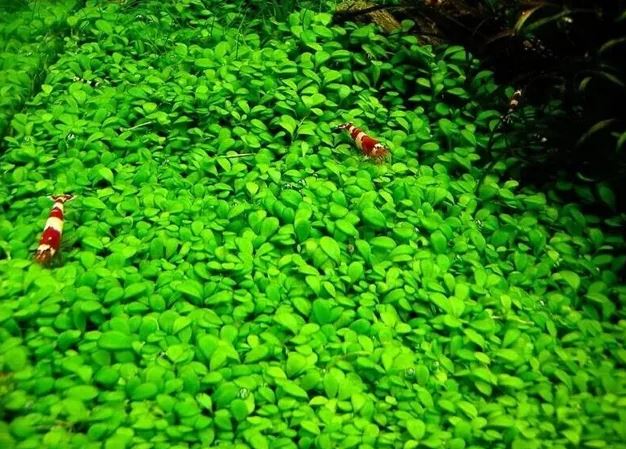5 steps you can take to stop your aquarium plants from dying
Problems with aquarium plants are extremely common.
I don’t think there is an aquarist that hasn’t experienced plant problems.
This article will discuss common issues and how to fix them.
- Increase or decrease the intensity of your aquarium lighting OR the amount of time the lighting is on.
If your tank appears darker than the other tanks you see online then it’s time to upgrade your lighting.
33333Low light level problems are becoming rarer as LED lighting becomes cheaper and brighter than fluorescent bulbs. Either replace the fluorescent fixture you might have or buy a stronger LED lighting fixture.
33333When choosing a new light fixture I like to make sure the light color is white rather than yellow or blue. Light color is measured in Kelvins (K). Yellow light will be around 2700K. You will see this in most room lights. Daylight / white light will be around 5500K. This is perfect for a planted aquarium. Blue light (like you see over reef tanks) may be 10,000K or more.
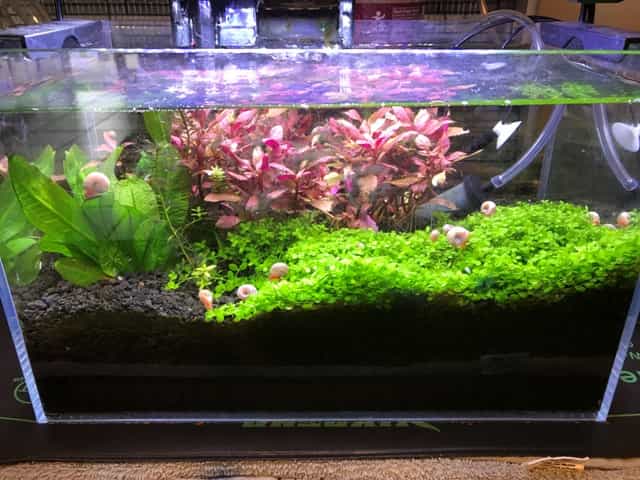
Above is the authors 2.8 gallon tank about 8 months after starting. Nano aquarium plants can also get too much light. The black hair algae will kill the red plant if left unchecked.
If you look at the red plants you’ll see black hair algae. This is possibly because I turned up the amount of time the light is on. The snails will eat everything but that hair algae. That is the only fertilizers the plants get). I’ve turned the timer the light is on down by one hour at this point. If that doesn’t clear up the BHA I will lower the amount of light the aquarium gets once more. I’ve dealt with this before and that is what has worked for me.
Keeping fish can be costly, but there's a great way to offset those expenses.
Consider creating your own website, just like I did with this one! I advertise Divi website creator, but you could place other ads on your website.
I've used Divi Wordpress website builder to build this site, and it's incredibly user-friendly. With its drag-and-drop interface, creating your own website becomes a breeze.
Simply tap this box to get started and see how easy it is to create a website with Divi.
The cost is $89/year. This is less than the cost of buying 3 discus fish. Divi comes with a 30-day money back-guarantee. Try it at no risk.
Take this box to visit the Divi website to learn more. The link opens in a new window.
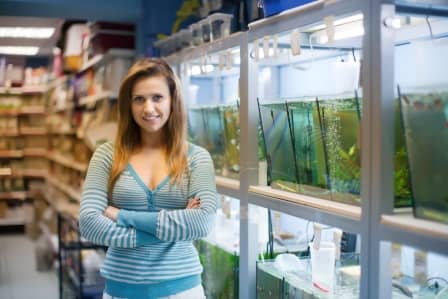
Video: How to place Divi onto your WordPress Website.
Video I made: How to easily create a homepage using Divi.
2. Make sure you have proper substrate.
A nano aquarium plants tank will have a growth medium in the bottom of the tank and not just gravel. There are a number of different substrates for your aquarium available online.
A substrate is a very rich source of natural plant nutrients it provides a “safe-space” for the growth of beneficial bacteria and it promotes plant root growth.
I prefer a thick layer of substrate in nano tanks so that the plants have enough substrate to grow into and hang on to.
Picture below is my 2.8 gallon. I started out with a soil base, but changed to Carib Sea Eco Complete.
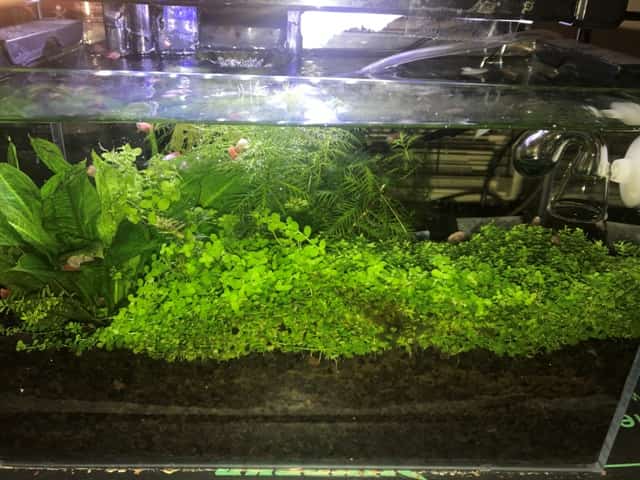
August 2024 – Update on Eco Complete: This product seems to have plant nutrients added. If you’re growing algae, this works well. If you want plants to grow then you need something without nutrients added, like plain gravel.
3. Make sure you’re not doing anything to your aquarium that will reduce plant nutrients.
According to Diana Walstad all the nutrients plants need can be provided with the water used in an aquarium, plant mulm, uneaten fish food and fish waste. The water in the tank and the top off water contain minerals that plants can use. Plant mulm (decaying plant leaves/stems) fish waste and uneaten fish food are processed in the nitrogen cycle to create CO2, nitrate, ammonium, and micronutrients. All of these chemicals are used by aquatic plants for growth of the plants.
Update August 2024. I have learned that the aquarium water needs to be nutrient poor, otherwise algae growth will happen. I do major water changes daily to achieve this.
An 8 point guide to taking beautiful aquarium pictures
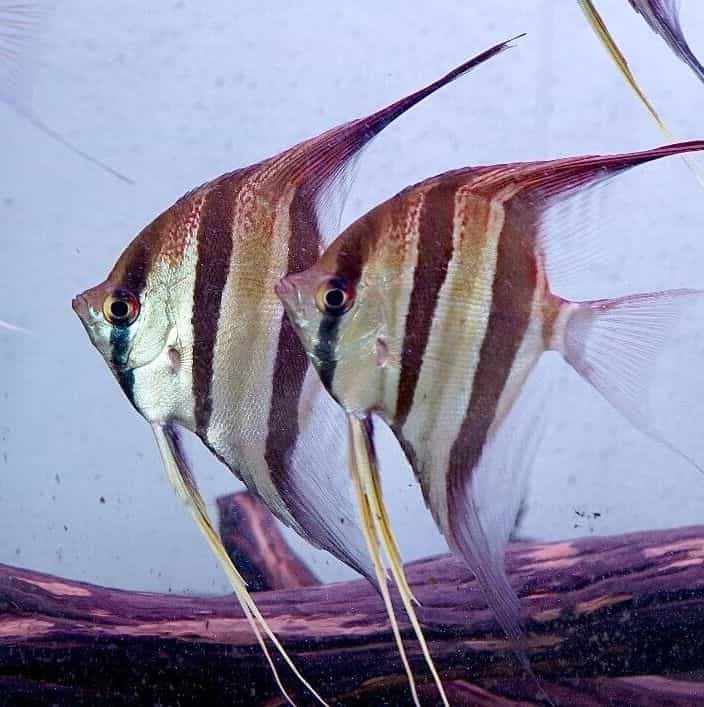
4. Increase the CO2 levels in your aquarium either by no-tech (from the nitrogen cycle), low-tech (Use a DYI CO2 generator) or high-tech (pressurized CO2 canisters).
Plants need CO2 to grow. Plants without enough CO2 won’t grow and will eventually die. High tech tanks pump CO2 into the aquarium. No-tech aquariums rely on natural cycles in the aquarium to produce CO2. As mentioned above CO2 can be naturally released into the aquarium water during the nitrogen cycle. It is also added by the animals in the aquarium and at night by the plants.
CO2 can be stripped out of the aquarium unknowingly by the aquarist. This happens in two ways: 1. Too much movement or agitation of the surface of the water. Water movement on the surface of the tank facilitates in the removal of the CO2 from the aquarium. The aquarium water surface should be nice and smooth. Water movement is ok. Agitation is not.
Aquarists who running their aquariums fully natural can remove CO2 by cleaning the tank too often. Removal, by cleaning, of the fish waste, plant mulm etc reduces the food for the beneficial bacteria. Without this food source CO2 is not produced in the amounts needed for plant health. Diana Walstad only cleans her natural aquariums every 6 months.*
Small Planted Aquariums Without CO2

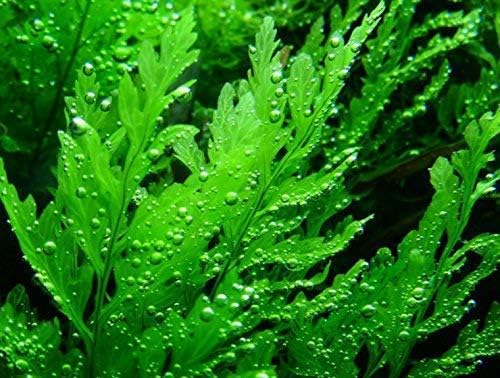

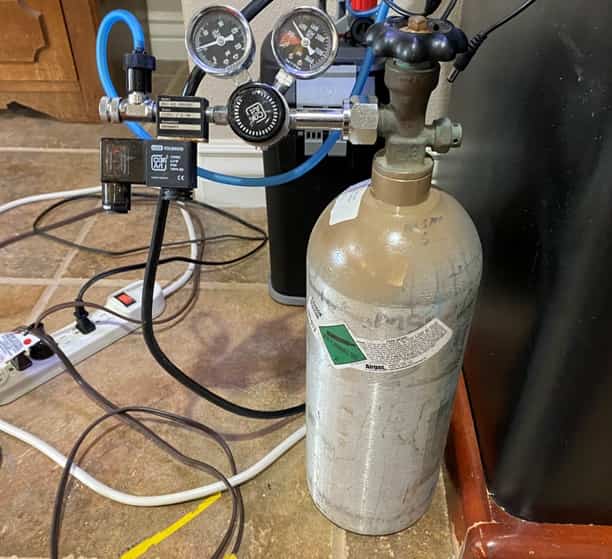
Above: Authors low-tech CO2 generator
Above: Authors high-pressure CO2 set up.
5. Fix allelopathy death by replacing the dying plant with a different type of plant.
Allelopathy in the aquarium happens when a plant releases chemicals into the water that that inhibit the growth of nearby plants.
In nature the chemicals are removed by water movement. In the aquarium with few water changes allelopathic chemicals build up and will eventually kill affected plants.
Often there’s no way to tell this is happening to a dying plant except to experiment. If the type of plant that is dying is important to you buy another one of the same type and plant it where the dying plant was. If the new plant dies (but few or none of the other plants are affected) then you know that one or more of the other plants is releasing allelochemicals into the water and affecting your dying plant(s).
There is no way to fix this issue accept to plant a different plant in the place of the dead plant.
On a side note: according to my readings (Ecology of the Planted Aquarium, Diana Walstad, page 35) the extremely common, very attractive aquarium plant Cabomba Caroliniana (fanwort) has a very high concentration of Allelopathic chemicals in its structure. If you have this plant growing in your aquarium and you are having troubles growing certain plants there is a good chance your fanwort is causing it.
Concentrating on these fixes will usually automatically lead to healthier plants.
Image below: The authors 10 gallon aquarium. Picture taken 12/12/2021
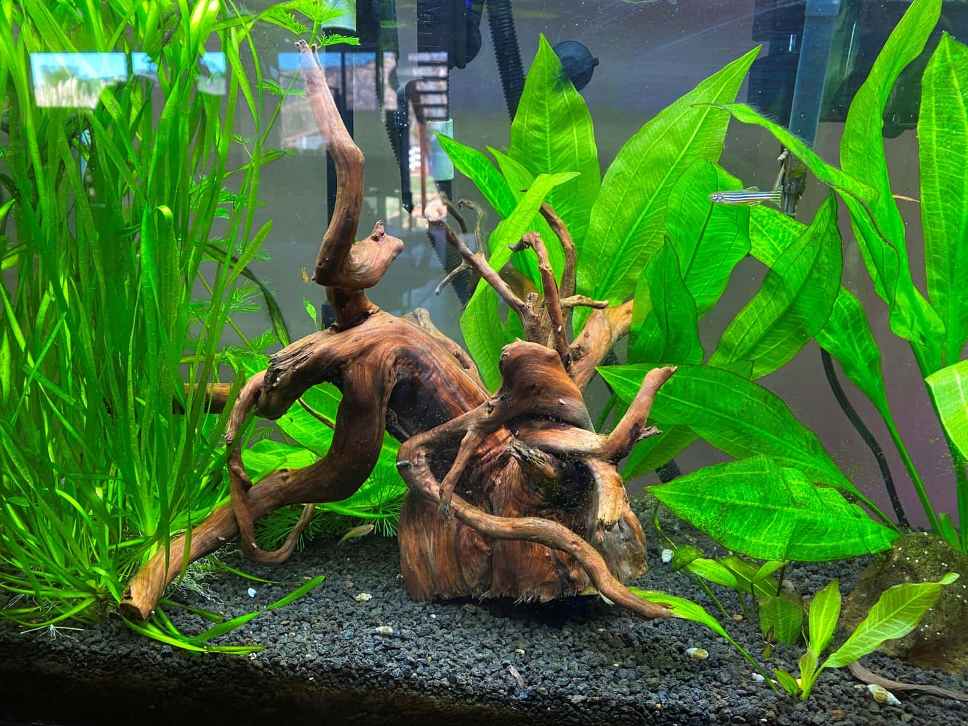
How I grew huge plants
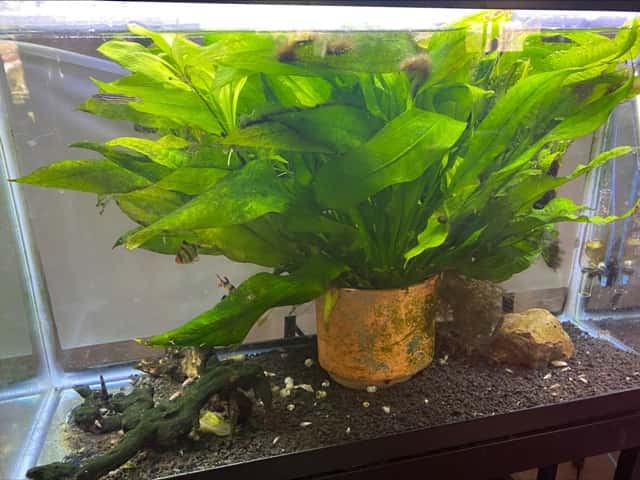
Taking Aquarium Photos

Additional freshwater aquarium fish information:
Fishlore.com – 500 aquarium fish
Guide to caring for freshwater fish
Grow a planted aquarium without substrate
